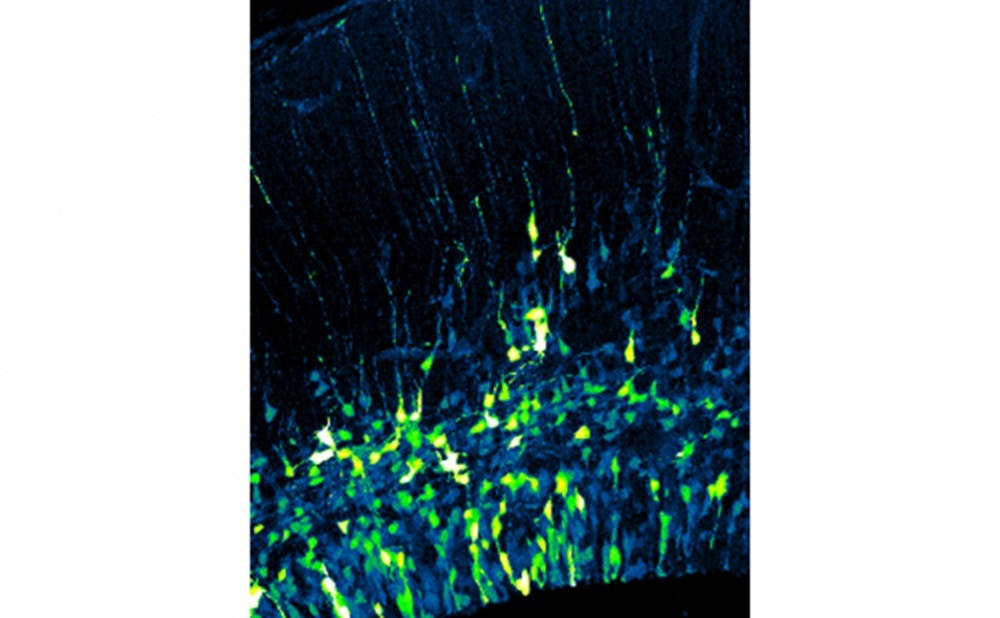Discoveries made by Duke researchers may help explain a developmental disease called microcephaly.
Published online Jan. 7 in the neuroscience journal Neuron, a group of Duke researchers found that stem cells that experience a delay during mitosis—the stage of the cell cycle in which a cell divides into two—produce fewer stem cells and more differentiated neurons, many of which die prematurely. This finding could help determine the causes of microcephaly, a rare disease characterized by abnormal smallness of the head, incomplete brain development and intellectual disability.
“We were interested in following up on a previous finding that I had made during my postdoctoral studies, in which I had found that a specific depletion of a gene called Magoh, which has a disruption of stem cells, causes smaller brain size in mice,” said Debra Silver, assistant professor of molecular genetics and microbiology at the School of Medicine.
A number of human genetic studies have collectively shown that mutations associated with brain size disorders such as microcephaly are caused by genes that control cell division, but the real mystery lies in how those mutations actually lead to a smaller brain, she explained.
“That’s where our study came in,” Silver said. “We wanted to understand what was actually driving those differences in neurons and stem cells and get a sense of what are the defects in stem cells that play a role in causing microcephaly.”
The research began with mouse mutants generated in Silver’s lab, which allowed the research team to perform live imaging of stem cells as they were dividing.
Silver's team found that some of the stem cells in Magoh-deficient mice took two to three times longer than normal to fully divide. These slowly dividing cells were also shown to be more likely to die prematurely.
“Some cells in the brain that are dividing more slowly will generate the wrong kind of cells,” said Louis-Jan Pilaz, a post-doctoral fellow in Silver's lab who assisted with the research.
The team investigated whether or not the extended duration of mitosis would directly lead to fewer stem cells and more differentiated neurons and dying cells. To demonstrate this causal relationship in a mouse model, the investigators treated cells and tissues with specific drug agents that prolonged their mitotic duration.
“One big challenge during the process was being able to visualize these cells and see the duration of mitosis,” Pilaz said. “Another challenge is trying to find the drug that could specifically delay mitosis to make it longer, but then could be reverted back and then to see what would happen.”
Silver said that the findings may have implications for parts of the body outside of the brain.
There are a number of disorders related to stem cell dysfunction that affect the development of all parts of the human body. Some of these other disorders may potentially be explained by prolonged mitosis, Silver said.
The researchers are also studying other genes in the same pathway that interact with the Magoh gene. The team has already identified a protein that is involved in signaling during mitosis but is still searching for the protein that instructs the cell to make neurons instead of stem cells.
Get The Chronicle straight to your inbox
Sign up for our weekly newsletter. Cancel at any time.

